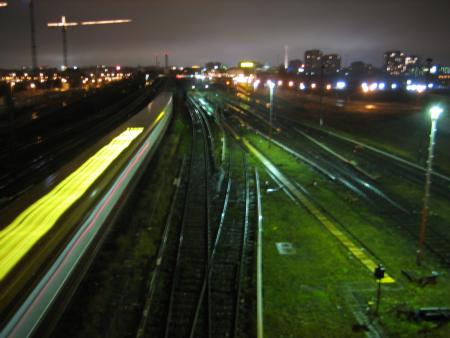Capital Transport¶
599 words
I observed two things as quite strange in Berlin. The first is not really unknown in Germany. And apparently it’s owed to the fact that after reunification an effort was made to put a nice fibre optic phone network up in what used to be East Germany to get them to the then current state of technology. Unfortunately stuff like DSL must have been invented after that and it seems to require proper copper wires rather than the fibre optic stuff. Meaning that the nice new network that was installed isn’t able to provide the fast internet connections we have today.
And, as a consequence of that, even in the capital city there are regions where you just can’t have a DSL line. And if you’re living in a house without cable TV (which probably has become rather unattractive since they switched to DVB-T with all its channels), it means you just can’t have a reasonably fast and convenient internet connection. And the friend I visited lives in one of the regions affected by this. A really strange thing… and I only was able to look through my e-mails when being at a café somewhere else.
My other pet peeve about the capital city is the public transport they have. Ignoring the fact that just too much of their underground trains actually run above the ground (cue Element of Crime’s Alle Vier Minuten here…), I always find that those trains are running too slowly. And too smoothly. Using the U or S Bahn there just doesn’t have that feeling of urgency and stress that it should have in a big city.
What’s also bad about public transport there is the signage. The inconsistencies in the typefaces that are used (which might just be historical in nature) aren’t a biggie. But in general I find the way they put up signs isn’t made to help people. When you’re in London, you’ll see signs giving the name and the colour of the line along with the destination and the direction it’s going in. That’s very useful as it lets you figure out where to go even if you just remember that you need to catch the black line to the North.
In Berlin, however, even listing the actual number of the line isn’t done in all places. And the general direction is never listed. So in some places – even in the S-Bahn stops at Ostbahnhof where I imagine that many clueless people like myself arrive – they’ll just have a little sign before you use the stairs to the platform with a name of some suburb that you have never heard of. So even if you know which line you need and which direction you need to go, this sign just doesn’t help you at all! You’ll need to find a plan and that final stop somewhere on the network to see which line and direction this refers to. Not very user-friendly.
What also put me off are their ticket machines. They operate very slowly. Particularly when you’re paying with a card. And there’s nothing more infuriating than seeing the train you need leave the station a metre away from you just because you wanted to do the right thing and buy a ticket but the ticket machine has decided to take ages to return your card or actually print the ticket. The people who designed and engineered this should be forced to use the machine for each ride they take – but probably they’re just consultants who don’t actually use public transport or they’re employees who get free year passes or so.

